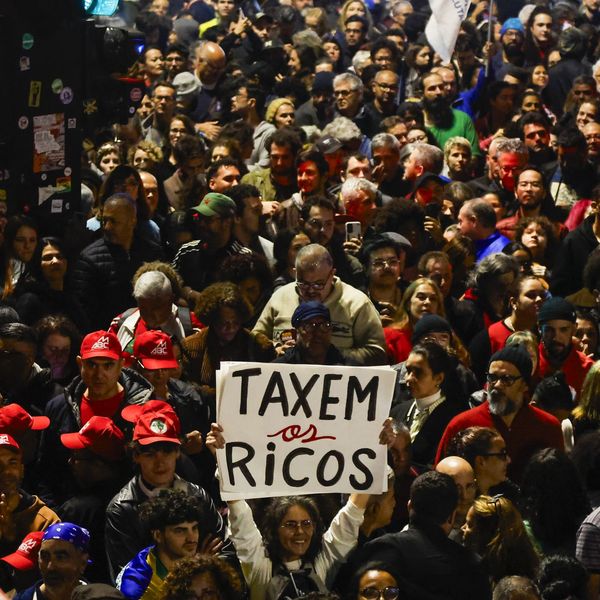How can you prepare for the US Presidential election resulting in a constitutional crisis and widespread civil unrest?
That question may sound unreal to you. Yet it doesn't sound so far-fetched to many political leaders and experts observing the run-up to the election. With many more mail-in ballots, which take much longer to count and are much more vulnerable to legal challenges, the counting might drag on for many weeks.
Given Donald Trump's inaccurate criticism of voting by mail as rife with fraud, it's very likely he will call such a turn of events fraudulent, unilaterally declare victory, and call to stop the count.
Unfortunately, widespread civil strife is a very likely result. Polling shows a rapidly-growing number of Americans on both sides of the political divide--44 percent of Republicans and 41 percent of Democrats--who feel at least some justification in using violence if their side loses the election. Those numbers grew substantially from June, when they were 35 percent for Republicans and 37 percent for Democrats.
The widespread protests over police violence and pandemic-related shutdowns this summer supports this statistical evidence. Republicans will come to election offices, city halls, and state capitols to protest the count. It will be a vastly exaggerated repeat of the "Brooks Brothers" riot that happened in November 2020 with the disputed George W. Bush vs. Al Gore Presidential election, which provides a clear precedent.
An even more recent and ominous precedent: this summer's protestors setting police stations on fire. Why wouldn't those who want to stop the count take over an election office and burn the uncounted ballots? That way, there really won't be any way to finish the count fairly and accurately.
Democrats will counter-protest to protect the count. Downtowns will fill with violence.
The violence, ballot destruction, and extensive legal challenges may result in stopping the election count in enough states to prevent either candidate from having a clear majority in the Electoral College vote on December 14. Both campaigns are already planning for such scenarios.
In that case, the role of choosing the President goes to the U.S. House of Representatives in early January. Yet depending on the results of the election for the House, both parties may well have means of blocking this vote. It's an impasse: we're in a true constitutional crisis, with no way out.
Of course, while all of this is happening in the halls of power, people are rioting in the streets. The stock market is spiraling downward, as is the economy.
I Don't Believe It
You might have been nodding along while reading all that, agreeing in principle it's all possible. Yet somehow, you're not opening a new tab and Googling "how to protect my business and family from civil strife." Why not?
Perhaps because while your rational, reasonable brain may admit the distinct substantial possibility of an election disaster, your gut doesn't buy it. A voice inside your gut whispers that it never happened before, and so it won't happen now.
Do you remember that same voice from reading articles at the beginning of this year about the possibility of COVID-19 turning into a pandemic and the need to prepare for it?
Our brains have a disastrous tendency to underestimate greatly--essentially ignore--low-probability and high-impact disruptors, what you might have heard called "black swans."
This disastrous tendency comes from dangerous judgment errors that researchers in cognitive neuroscience and behavioral economics call cognitive biases. These mental blindspots impact all areas of our life, from health to politics and even shopping.
Three cognitive biases bear the biggest fault for our failure to face the truth that we need to accept and plan for the possibility of an election disaster
The normalcy bias refers to our brains assuming things will keep going as they have been--normally, that is--and evaluate the near-term future based on our short-term past experience. As a result, we underestimate drastically both the likelihood of a serious disruption occurring and the impact of one if it does occur, such as a constitutional crisis.
Another major problem, the confirmation bias, describes our strong preference to look only for information that already supports our pre-existing beliefs and gut feelings. Even when we do find data that goes against our current intuitions, our gut reaction is to feel uncomfortable with and reject such evidence, such as rejecting the possibility of a major election disaster.
When we make plans, we naturally believe that the future will go according to plan. That wrong-headed mental blindspot, the planning fallacy, results in us not preparing sufficiently for contingencies and problems, and not changing our plans nearly quickly enough when they do come up. The planning fallacy applies especially black swan-type low-probability, high-impact events such as a U.S. election with no peaceful transfer of power and a constitutional crisis.
What's the Real Risk of an Election Disaster?
Once we're confronted with a substantial likelihood of an upcoming low-probability, high-impact negative event, we often make bad decisions about how to assess and mitigate such risks. That's because our gut reaction to threats is the fight-or-flight response, a binary mindset of yes or no, black or white, attack or flee.
Such reactions helped us survive on the ancestral savannah, but don't serve us well in response to most threats in the modern world. Instead, you need to apply the tool of probabilistic thinking, which allows you to calculate the probabilities of various events and plan out a long-term strategy.
First, assign a probability to various election disaster scenarios. What's the probability that the mail-in ballots will take a long time to be processed due to legal challenges and civil strife, say stretching at least until the Electoral College vote on December 14? Given the serious preparations by both campaigns and other political leaders, as well as election expert analysis, I'd say no less than 30 percent, and as much as 50. You can assign your own numbers based on your own estimates.
After that, what's the likelihood that the Electoral College vote will not be decisive? Perhaps only half of that, so being conservative and taking half of 30, we're at 15 percent.
What about the likelihood of a stalemate in the House in early January, resulting in a full-blown constitutional crisis with no clear way out? This is quite likely if the situation gets there, perhaps two-thirds. So, we take two-thirds of 15 percent and end up at 10 percent.
Mitigating Election Disaster Risk
Now imagine what the future for your work and life would look like if the civil strife and legal challenges lasted only through the Electoral College vote. What kind of problems might come up for you and how can you solve them?
If you're an employer, revisit your business continuity plan: the large majority were seriously underprepared for the pandemic, for example. If you're not working all virtually now, consider what you would do if the conditions require you to go to all-virtual work. Consider getting extra security for your office ahead of potential civil strife.
Let your employees know about the significant possibility of an election disaster, and encourage them to take the steps outlined above. Remind them of any opportunities you provide for access to mental health resources, such as through an Employee Assistance Program. Prepare your office for a number of your employees suffering a serious disruption in their work; make sure that the more important positions have employees cross-trained to provide back-ups just in case.
If you manufacture products, see where you might need to take steps to protect your supply chains. Consider ordering extra supplies to tide you over in case of disruptions. If you provide services, reassure your clients about the steps you will take to protect your services from interruptions. If you're a government entity, take extra steps to secure various public locations, especially election-related ones, and beef up security as needed.
How many resources would you require to address problems: time, money, social capital, information? Add them up, and multiply them by 30 percent. Then, go on to use those resources to prepare for this possibility.
Next, consider what problems you might face, and what resources you might need, if the Electoral College vote is indecisive, and this situation goes into early January. Multiple these resources by 15 percent. Then, use those resources to prepare for this stretch from December 14 to early January.
Finally, evaluate the problems, opportunities, and resources needed if the House voting ends in an impasse and a constitutional crisis. Multiply these by 10 percent, and proceed to prepare for this scenario.
Now, perhaps 10 percent for the worst of all scenarios, the constitutional crisis, doesn't seem that high to you. Yet what's the probability of your business or your house burning down any given year? Not very likely, right? Still, you're not going to give up your fire insurance.
In the same way, taking the steps above provides you with election disaster insurance; it would be just as foolish to get rid of your fire insurance as to avoid doing what you need to do to protect your work and life from an election disaster. Using this science-driven approach, you distribute your problem-solving, opportunity-taking, and resources across the different possibilities in accordance with your chosen evaluations.
Whatever you do, I hope you don't simply finish reading this article and click complacently through to the next one. Too many made this mistake with articles warning about the serious threat of the low-likelihood, high-impact disaster caused by the pandemic. Don't let your gut reactions lead you to the same disastrous outcome.



